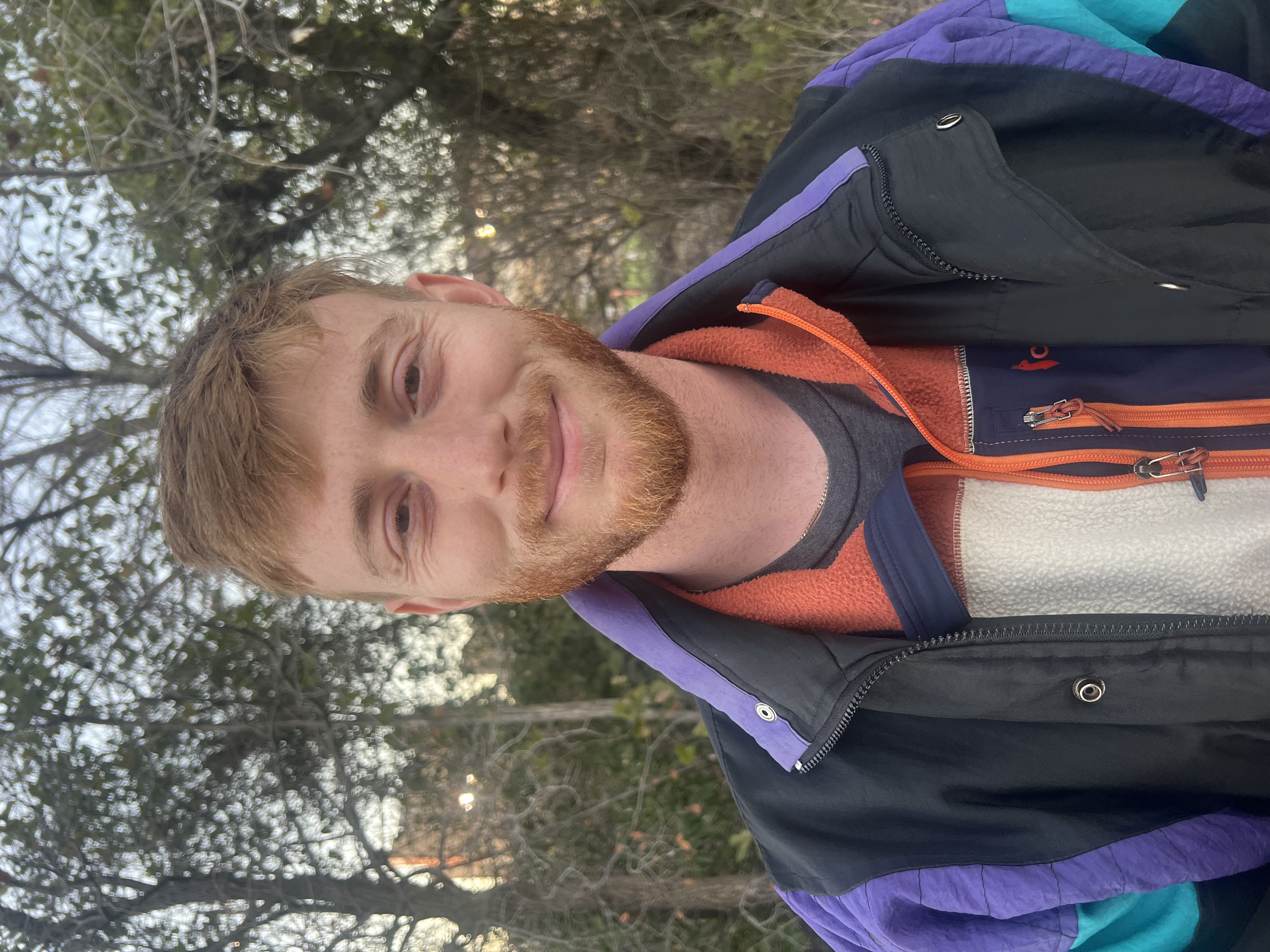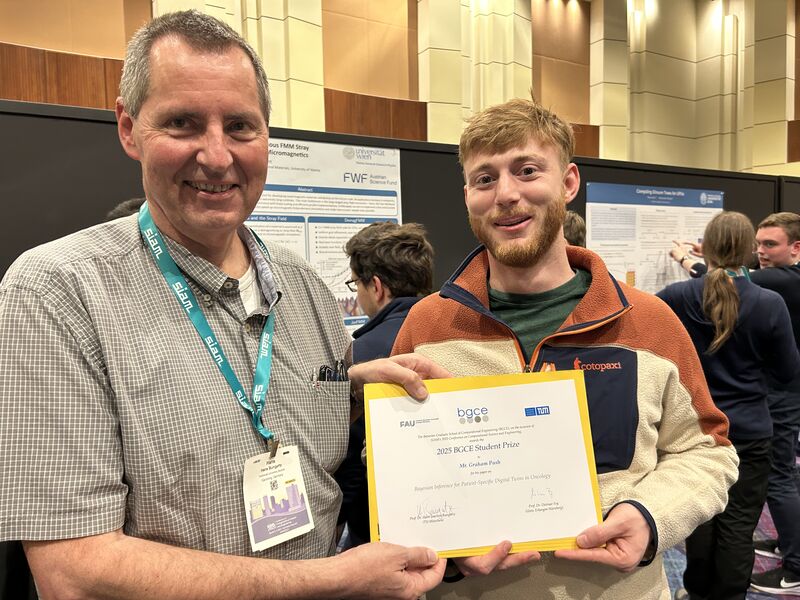At a young age, Graham Pash became fascinated with the workings of locomotives, which led to his interests in engineering and its related applications. Through his high school and undergraduate experiences, those interests have flourished. Graham is in his fifth year in the Computational Science, Engineering, and Mathematics (CSEM) Ph.D. program, where he is a member of the Willcox Research Group and the Center for Scientific Machine Learning. Graham’s research focuses on mathematical applications to engineering, with specific interests in uncertainty quantification, digital twins, and precision oncology.
During high school at the North Carolina School of Science and Mathematics, Graham quickly developed a passion for mathematics after participating in a mathematical contest in modeling. That interest continued to flourish throughout his undergraduate years at North Carolina State University, where he explored mathematical research under Professor Ralph Smith, who was also his undergraduate research advisor.
Graham graduated with a Bachelor of Sciences in Applied Mathematics and Mechanical Engineering, and at the encouragement of Smith, Graham applied and was accepted to the Oden Institute for Computational Engineering and Sciences CSEM graduate program at The University of Texas at Austin.

